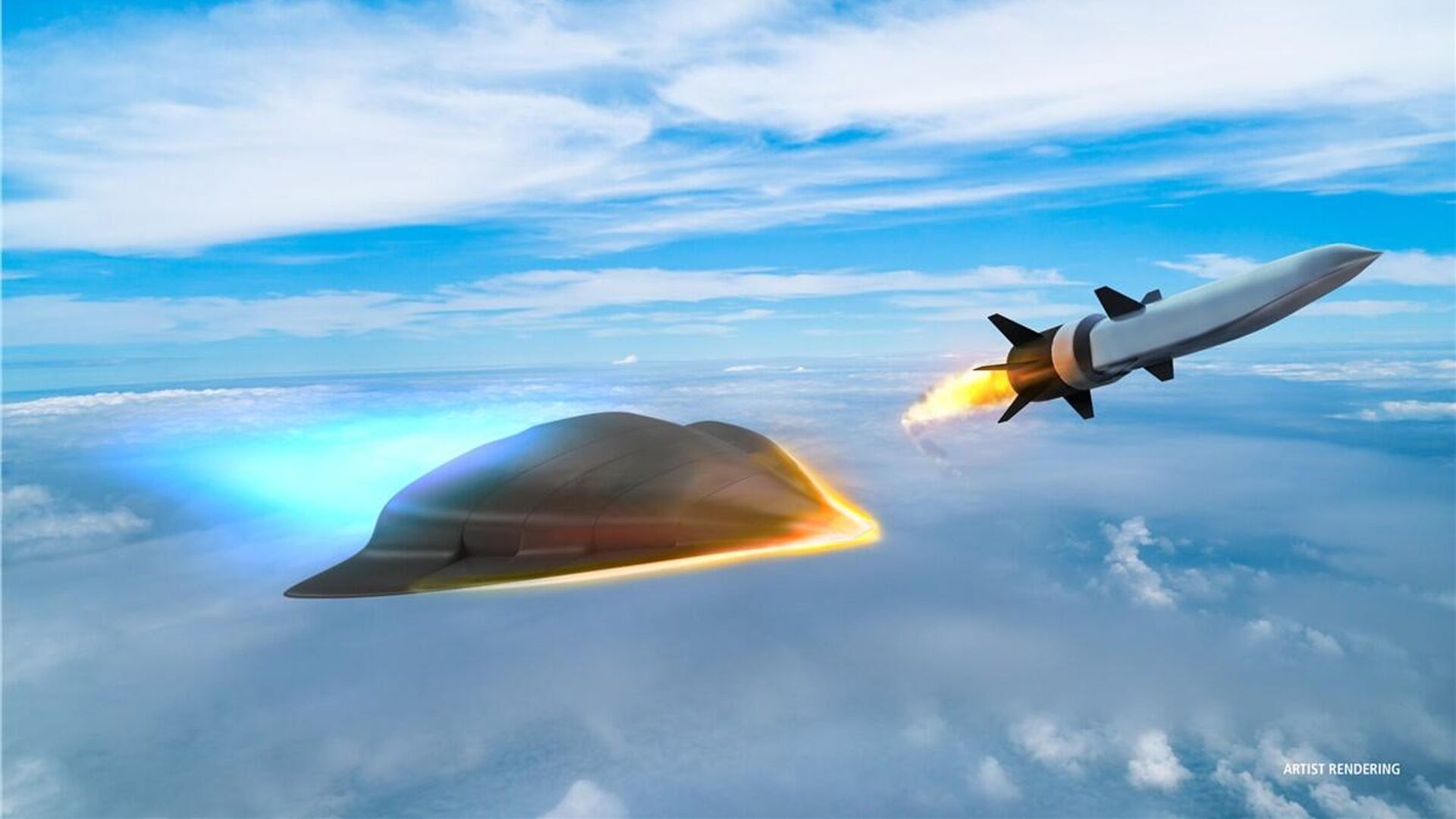https://sputnikglobe.com/20220827/us-navy-develops-high-energy-lasers-to-destroy-russian-chinese--hypersonic-missiles-1100060864.html
US Navy Develops 'High Energy Lasers' to Destroy Russian, Chinese Hypersonic Missiles
US Navy Develops 'High Energy Lasers' to Destroy Russian, Chinese Hypersonic Missiles
Sputnik International
Last month, Politico reported that the US Defense Department had injects hefty sums into the development of very high altitude balloons to operate in the... 27.08.2022, Sputnik International
2022-08-27T11:48+0000
2022-08-27T11:48+0000
2022-10-19T20:03+0000
military
us
russia
china
hypersonic weapons
threats
us navy
https://cdn1.img.sputnikglobe.com/img/07e6/07/13/1097586461_0:79:1200:754_1920x0_80_0_0_2441462d680d518474bc8086c964bd14.jpg
Chief of Naval Operations Admiral Mike Gilday has announced that the US Navy is developing so-called directed energy systems as a potential defense against hypersonic missiles.Speaking at a Heritage Foundation event, Gilday stressed that developing systems which would use high energy lasers or high power microwaves to destroy a hypersonic threat remains a top priority for the Navy.He also admitted to the advances that the US’ adversaries, such as Russia and China, have made in hypersonic weapons. “They're a significant concern. Russia and China are both developing those capabilities and will be fielding those capabilities shortly,” Gilday emphasized.The remarks came after Politico cited unnamed sources as saying in July that the Pentagon is significantly increasing its spending to create unmanned balloons, designed to operate in the stratosphere between altitudes of 60,000 to 90,000 feet (18,300 to 27,400 meters) to tackle potential threats from enemy hypersonic weapons.The Defense Department spent a relatively modest total of $3.8 million on initial research into the balloon surveillance project in fiscal years 2021 and 2022, a sum that is now being expanded to $27.1 million in fiscal year 2023, according to Politico.Washington has repeatedly expressed concern that Moscow and Beijing are ahead when it comes to the development of hypersonic weapons.Russia became the first country in the world to achieve modern hypersonic capabilities after putting the Kinzhal (Dagger) nuclear-capable air-to-ground missile system into service in late 2017. China followed suit with rolling out the DF-ZF hypersonic glide vehicle in October 2019. The US is still in the process of testing hypersonic systems, some of which have been delayed due to a raft of testing failures.Hypersonic weapons move in the upper atmosphere at speeds of more than five times the speed of sound, or about 6,200 kilometers (around 3,800 miles) per hour.
https://sputnikglobe.com/20220630/latest-test-of-us-hypersonic-missile-fails-in-hawaii-pentagon-spokesman-says-1096832523.html
russia
china
Sputnik International
feedback@sputniknews.com
+74956456601
MIA „Rossiya Segodnya“
2022
Oleg Burunov
https://cdn1.img.sputnikglobe.com/img/07e4/09/0b/1080424846_0:0:2048:2048_100x100_80_0_0_3d7b461f8a98586fa3fe739930816aea.jpg
Oleg Burunov
https://cdn1.img.sputnikglobe.com/img/07e4/09/0b/1080424846_0:0:2048:2048_100x100_80_0_0_3d7b461f8a98586fa3fe739930816aea.jpg
News
en_EN
Sputnik International
feedback@sputniknews.com
+74956456601
MIA „Rossiya Segodnya“
Sputnik International
feedback@sputniknews.com
+74956456601
MIA „Rossiya Segodnya“
Oleg Burunov
https://cdn1.img.sputnikglobe.com/img/07e4/09/0b/1080424846_0:0:2048:2048_100x100_80_0_0_3d7b461f8a98586fa3fe739930816aea.jpg
us, russia, china, hypersonic weapons, threats, us navy
us, russia, china, hypersonic weapons, threats, us navy
US Navy Develops 'High Energy Lasers' to Destroy Russian, Chinese Hypersonic Missiles
11:48 GMT 27.08.2022 (Updated: 20:03 GMT 19.10.2022) Last month, Politico reported that the US Defense Department had injects hefty sums into the development of very high altitude balloons to operate in the stratosphere which could allow them to track and destroy incoming hypersonic weapons.
Chief of Naval Operations Admiral Mike Gilday has announced that the US Navy is developing so-called directed energy systems as a potential defense against hypersonic missiles.
Speaking at a Heritage Foundation event, Gilday stressed that developing systems which would use high energy lasers or high power microwaves to destroy
a hypersonic threat remains a top priority for the Navy.
“From a defensive standpoint, we're focused on the threat. We're not ignoring it,” the top US admiral pointed out.
He also admitted to the advances that the US’ adversaries, such as Russia and China, have made in hypersonic weapons. “They're a significant concern. Russia and China are both developing those capabilities and will be fielding those capabilities shortly,” Gilday emphasized.
The remarks came after Politico cited unnamed sources as saying in July that the Pentagon is significantly increasing its spending to create unmanned balloons, designed to operate in the stratosphere between altitudes of 60,000 to 90,000 feet (18,300 to 27,400 meters) to tackle potential threats from enemy hypersonic weapons.
The Defense Department spent a relatively modest total of $3.8 million on initial research into the balloon surveillance project in fiscal years 2021 and 2022, a sum that is now being expanded to $27.1 million in fiscal year 2023, according to Politico.
Washington has repeatedly expressed concern that Moscow and Beijing are ahead when it comes to the development of hypersonic weapons.
Russia became the first country in the world to achieve
modern hypersonic capabilities after putting the Kinzhal (Dagger) nuclear-capable air-to-ground missile system into service in late 2017. China followed suit with rolling out the DF-ZF hypersonic glide vehicle in October 2019. The US is still in the process of testing hypersonic systems, some of which have been delayed due to a raft of testing failures.
Hypersonic weapons move in the upper atmosphere at speeds of more than five times the speed of sound, or about 6,200 kilometers (around 3,800 miles) per hour.




